
Everything in this slideshow
-
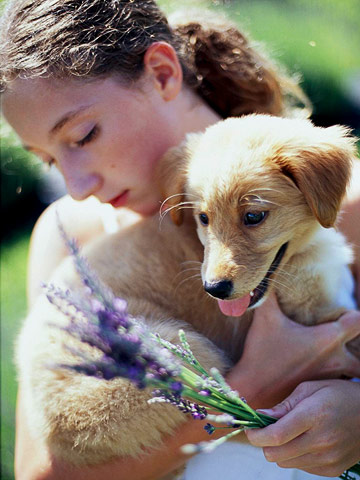
Start Young
The earlier you start training your dog the better. Old dogs can learn new tricks, but if you have a puppy, begin training as soon as you bring it home. Let it know right away what parts of the garden are off limits. And don’t assume puppies can’t learn. Even puppies as young as six weeks old can master basic commands.
- Check out the Dogs and Puppies section of BHG.com!
-
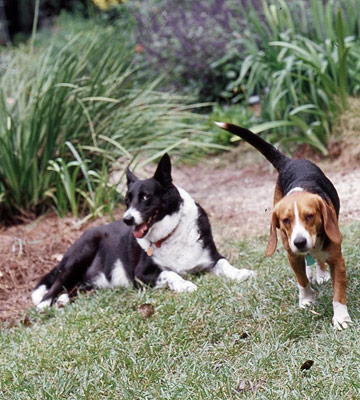
Don’t Leave Your Dog Alone
If you want a perfect lawn or garden, don’t just shove your dog out the back door while you are at work. Dogs require exercise and get bored easily. Left alone, they quickly find ways to amuse themselves — and that may mean digging up your favorite plants or tearing out your sod.
-
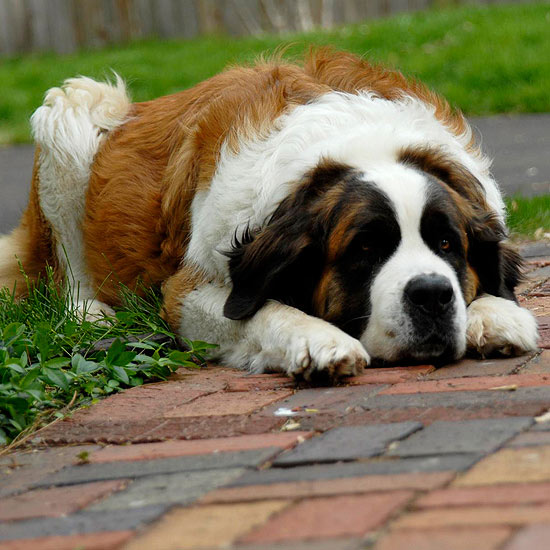
Teach Your Dog Obedience
Take your dog to an obedience class so it understands basic commands such as sit, stay, and down. Larger dogs, especially, make better gardening partners if they know how to hang out without causing trouble or getting in the way. Find a local obedience class and enroll your dog as soon as you adopt it.
-
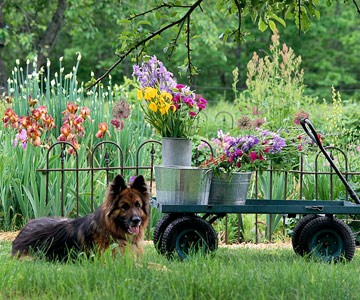
Latch Your Gates
To keep your dog from getting out of your yard, make sure your garden gates have strong latches. A gate lock will prevent it from being left open by delivery people or neighborhood children.
Here’s a Hint: Make sure your dog always wears a collar with ID tags, and have it microchipped as soon as possible. That way, if your dog does get loose, your chances of recovering it will be greater.
-
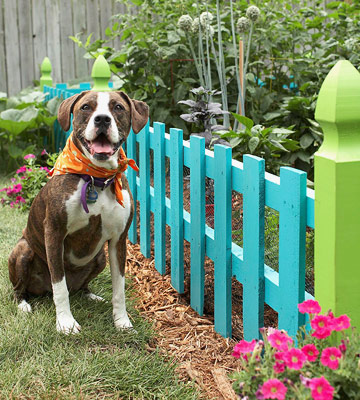
Use a Fence
When all else fails, protect your beds and borders with a low fence. Here, a low picket fence was all that was required to keep this bouncy bruiser at bay. You’ll be surprised at how even the most meager fence can be a visual barrier for your dog.
Here’s a Hint: Check your fence once a month to be sure your pet hasn’t dug an escape route or gnawed a hole through a hidden corner.
- See a number of cool fence ideas here!
-
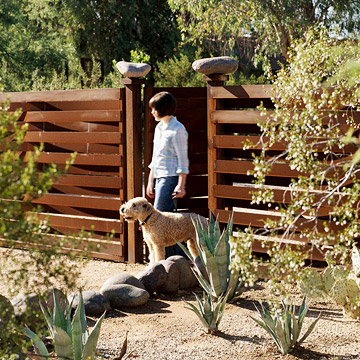
Try a Kennel
If your dog has to spend a lot of time by itself, build a kennel where the dog can remain safely during the day. Most kennels are made of chain link, but you can create something more eye-catching with ornamental fencing. Cover the ground with gravel and be sure the dog has plenty of fresh water and shelter from the elements.
-
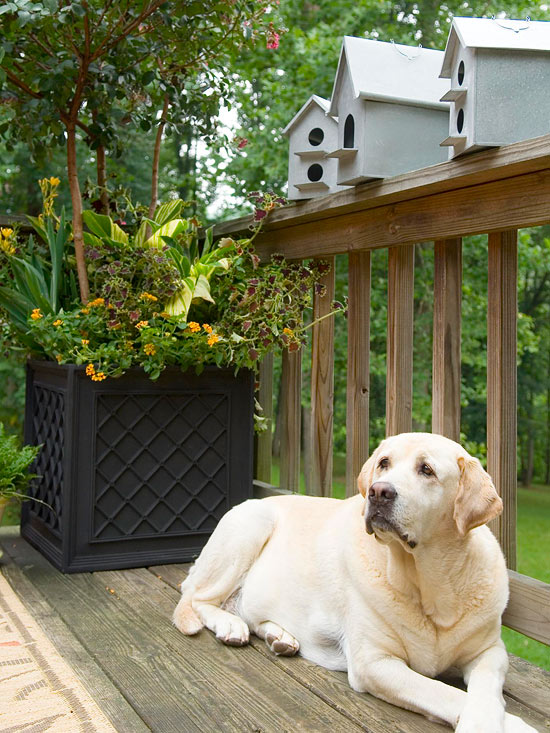
Use Your Deck
A large deck can be a great place for your dog to enjoy the outdoors when you can’t watch your pet every minute in the garden. Install a sturdy railing and gate, making sure that your dog can’t get its head stuck between the supports.
Here’s a Hint: Give you dog plenty of chew toys to keep it occupied. This will also protect your deck from becoming a snack for your dog.
- See a number of great decks here!
- Learn more about dog toys.
-
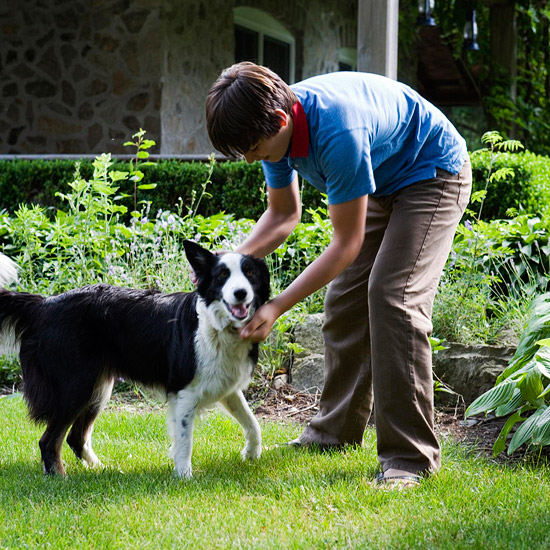
Play with Your Dog
Dogs need physical and mental stimulation each day. So carve out time to give your dog a long walk or playtime each day. Active breeds like this Border collie can cause a lot of damage to your beds and borders if they are bored.
Here’s a Hint: Walk your dog for 45 minutes every day to keep it fit and happy.
-
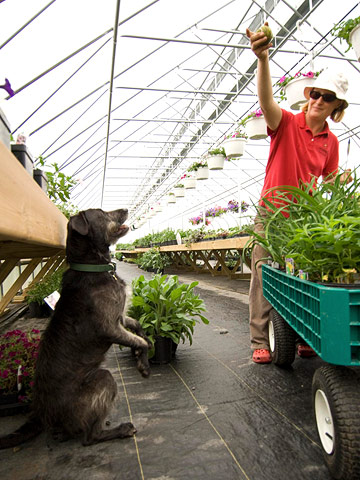
Include Your Dog
As you garden, provide your dog with an activity. This happy hound gets a tennis ball tossed for it throughout the day as its owner works in her greenhouse.
-
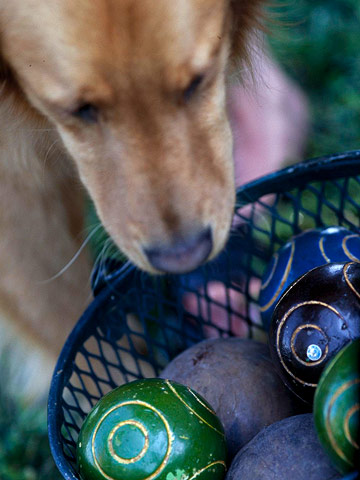
Keep Toys Handy
Keep a stash of dog toys in your garden. These can be special toys your dog only gets to play with while it’s with you in the garden. Here, a lucky golden retriever has its personal selection of colored balls to choose from.
-
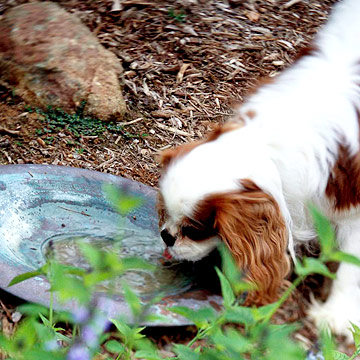
Provide Water
Dogs get hot easily, so always be sure to have a source of fresh water available in the garden. This Cavalier King Charles spaniel quenches its thirst from a handmade dog bowl that doubles as a piece of garden art.
-
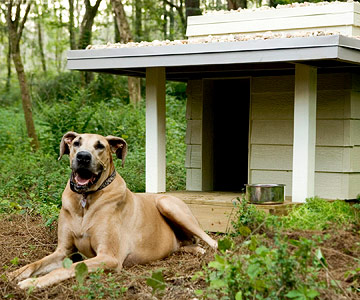
Give Them Shelter
Even if your dog lives in the house, it will appreciate having its own home where it can retreat to when outdoors during stormy weather. And remember that doghouses don’t have to be eyesores. Design one to match your home so it fits in with your landscape.
-
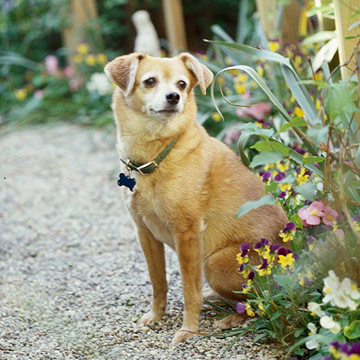
Pave Pathways
Keep feet and paws dry by paving your garden paths with brick or gravel. Plus, most dogs will quickly learn to stay on the paths so your lawn and garden soil won’t become packed down.
Here’s a Hint: Mulched paths work well, too, but avoid using cocoa bean hulls as they can make your dog sick if it eats this mulch.
- Don’t miss these garden path ideas!
-
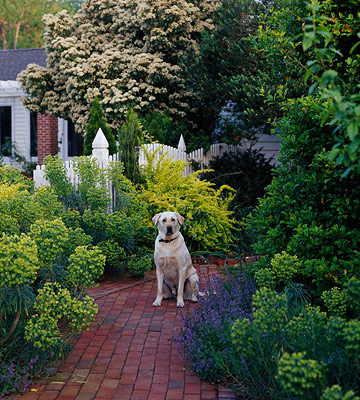
Grow Barrier Plants
Even the most rambunctious dog will avoid garden beds planted with tall, fragrant, or thorny plants. Barberries, roses, euphorbia, Joe Pye weed, and bamboo are just a few rugged yet beautiful plants dogs prefer to walk around rather than through.
- Don’t miss these tall perennials!
-
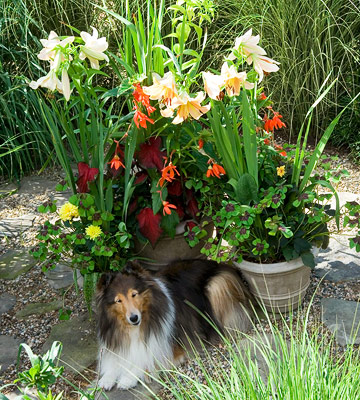
Try Container Gardening
If all else fails, plant your favorite flowers and vegetables in containers. Most plants do well in large pots or planters, and they’ll be less likely to be trampled by pounding paws. Here, a beautiful assortment of summer bulbs bloom safe from the owner’s sheltie.
- Check out our container gardening guide!
-
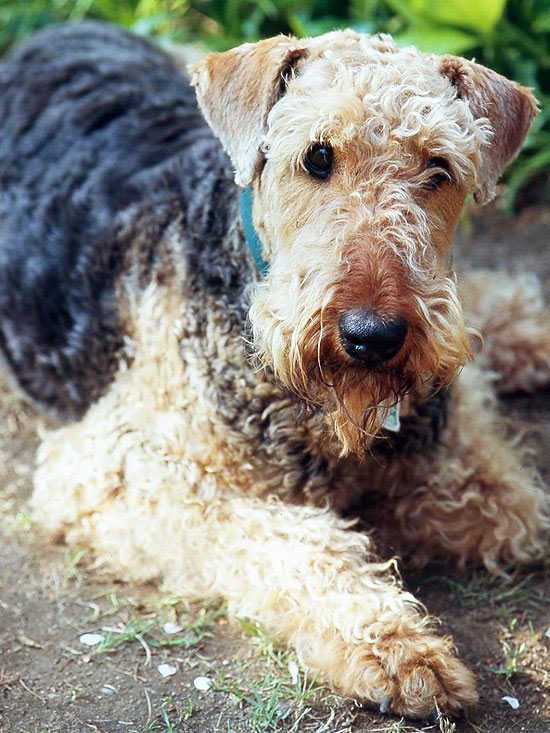
Know Your Breed
Dogs have strong natural instincts you should be aware of before you turn them loose in your backyard. Terriers, such as this Airedale, love to dig and if left unattended, can eventually turn your garden upside down. Be sure to give them lots of exercise and toys to chew on to keep excavation to a minimum.
- See the most popular dog breeds.
-
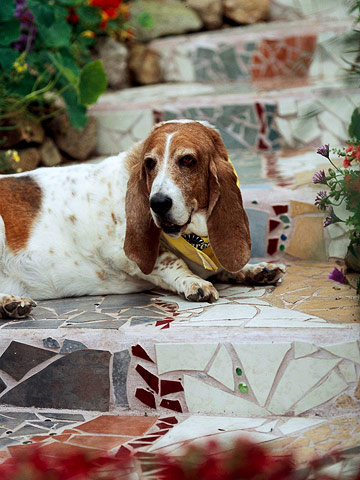
Care for the Elderly
As dogs age, their hearing or sight may decline, or they may have difficulty getting around. If you have an older dog, be willing to help it up and down steps and be alert to prevent it from accidentally falling into swimming pools or wandering behind cars. This older basset hound occasionally requires a lift up the garden steps.
Here’s a Hint: Elderly dogs can suffer when temperatures soar. If your older dog is with you in the garden, be sure to provide a shady place for it to relax.
- Get tips for caring for older dogs.
-
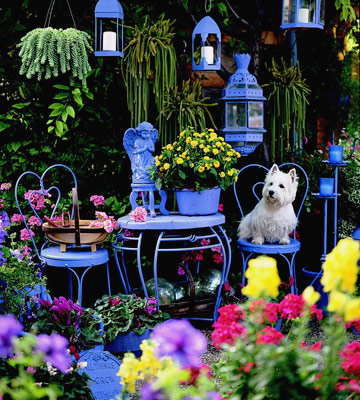
Include Your Dog
Dogs are pack animals and don’t enjoy being kept in another part of your house or yard when visitors arrive. So make sure your dog is well trained and invited to all family functions. This little West Highland white terrier waits patiently for the festivities to begin.
Here’s a Hint: Never feed your dog from the table. It will encourage begging, which can be annoying.
-
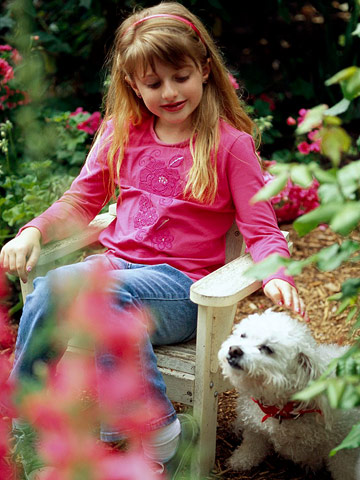
Introduce Children
Dogs and kids are a great combination, but if your dog isn’t used to being around children it could become fearful. So find some kids in your neighborhood or at the dog park and let your dog spend some time with them. Socialize your dog as much as possible so it maintains good manners around any visitor, young or old.
-
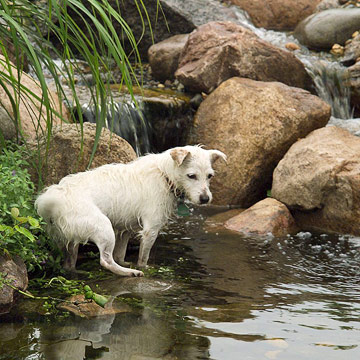
Have Fun
And finally, enjoy your dog and don’t get too upset if your dog knocks over a pot or kills a plant. Remember, plants grow back, but your relationship with your dog can be a lot more rewarding. In this garden, for example, the owners allow their Jack Russell terrier to dive in their water garden in an attempt to catch koi. The koi aren’t bothered, the dog enjoys herself, and the owners get to laugh at her antics.
- Share photos of your pets with us!
-

SOURCE:http://www.bhg.com/gardening/landscaping-projects/landscape-basics/gardening-with-dogs/